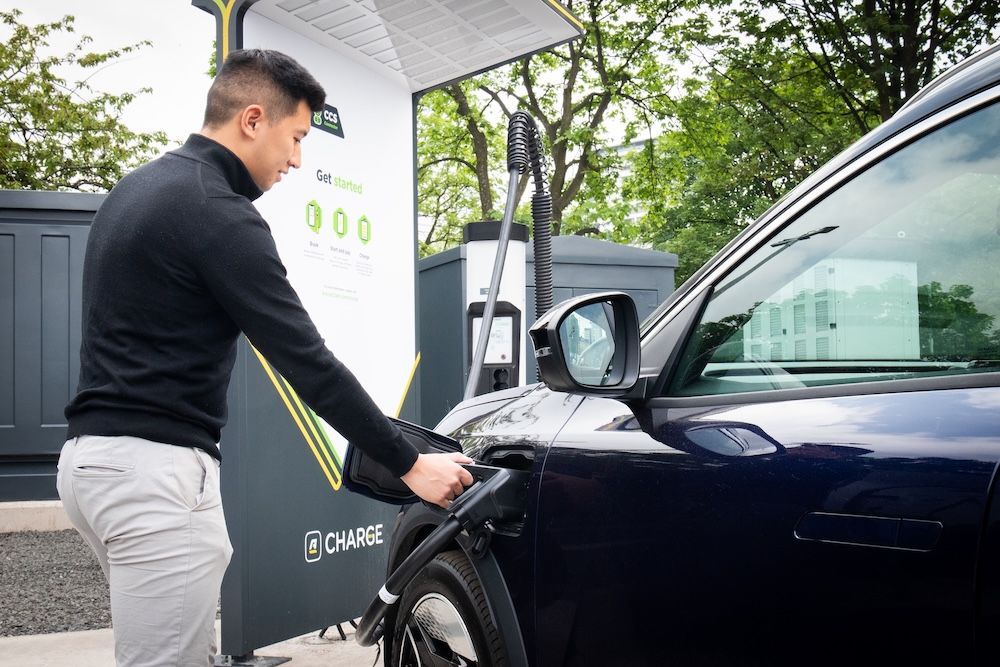Aatish Patel is the President and Co-founder of XCharge North America, leading the charge to enhance the potential of electric vehicle adoption nationally by improving EV charger accessibility and charging capabilities. In this piece, Aatish delves into recent federal procedures implemented by the Biden administration for EV adoption and how technology can benefit the infrastructure and consumers for the long-term integration of EV solutions in the US.
The electric vehicle industry is eager for auto market domination. And EV companies have aimed to attain widespread adoption through US federal funding through the recent National Electric Vehicle Infrastructure Program (NEVI) and Biden Administration grant program. These programs were established to diminish the EV charger accessibility issues that are persistent in hindering widespread EV adoption. The Biden Administration has provided a $2.5 billion Discretionary Grant Program to states that aim to implement more EV charging access in rural environments and lower-income communities. However, the government’s ‘Build America Buy America’ (BABA) strategy is a time-consuming and capital-intensive endeavor for manufacturers, who will divert their efforts to securing their US supply chain. Without an adequately designed infrastructure to improve driver accessibility and convenience, these efforts will not be maximised to their fullest potential to improve the longevity of EV charging solutions.
Neglectful NEVI
The NEVI program and the Biden administration’s efforts are commendable. However, improving EV charging accessibility could be more effective by refocusing the initiatives towards technology solutions that emphasise solution design for effective charging experiences. The current infrastructure program fails to factor in the limited domestic supply chain, labour constraints, and general production backlogs to install a surplus of chargers. The 55% cost of components needing to be US-based will slow production due to supply chain shortages. EV charging stations are multi-piece, complex products. Looping in the BABA requirements is unrealistic when the US industry has a different direct-current fast charger (DCFC) manufacturing level than our international counterparts. These requirements may put deployments at a standstill while EV charger manufacturers focus on securing their supply chain.
The lack of uniformity among state and city measures will also cause delays, as it requires unique RFPs for each state or municipality. For example, Texas requires municipality involvement, while Indianapolis and Cleveland do not. The current incentives are demotivators for accelerated adoption as it prioritises public funding bids for EV companies, rather than deploying solutions supporting the longevity of charging infrastructure for EV drivers.
Install: The future solution of EV
The federal programs need to acknowledge the condition of the North American electrical grid, which is older, less robust and has lower voltages than the European grid. Federal funding is wasted when EV companies provide products designed for the European grid that must be modified to operate within the US. The current incentive programs are not clearing the road to boost EV adoption. Instead, the future vision lies in designing chargers aligned to the nation’s grid.
Unfortunately, EV charging providers install solutions for a 480V input rather than the existing 208V input commonly available in the US. 480V charges require added transformers, switches and charging cabinets along with the actual charging stations, which do not guarantee quality and stable charging capabilities. Instead, it will squander the NEVI funds due to the increased installation costs and slow deployment.
A future mindset requires looking beyond just short-term improvement in energy potential. EV consumers deserve a dependable product. Installing the correct level 3 DCFC stations for a 208V input ensures EV drivers have a reliable product designed with the North American grid in mind. Supporting EV adoption is also a matter of integrating charging as a daily task by installing these solutions in practical locations. Deploying efficient chargers at high-traffic locations like gyms and shopping centres rather than placed off a highway or in remote areas increases the accessibility of quality chargers.
Looking ahead even further, introducing an innovative EV charger with energy storage and bidirectional capabilities is essential for developing smart cities. Chargers that are battery-to-grid versus vehicle-to-grid functional are a public asset since they can reenergise into the installed electrical grid in times of need.
Futureproofing charging
Undoubtedly economic aid is needed to increase EV adoption, mainly to accelerate improvements to the EV charging infrastructure. The issue is not solved by simply installing more chargers. The growing demand for EVs means drivers expect long-term stability in the charging infrastructure. There is no effective change for US consumers who will continue waiting for repairs and new installs since companies are deploying inefficient, weak chargers that are not designed for the nation’s grid.
Futureproofing the accessibility and quality of EV charging infrastructure requires standards for the solutions deployed in the states, beyond consideration of obtaining federal dollars. Technology-driven measures that consider the road ahead will improve the quality and reliability of EV charging for consumers and act as an insurance policy for the US power grid.
Image courtesy of XCharge North America.








